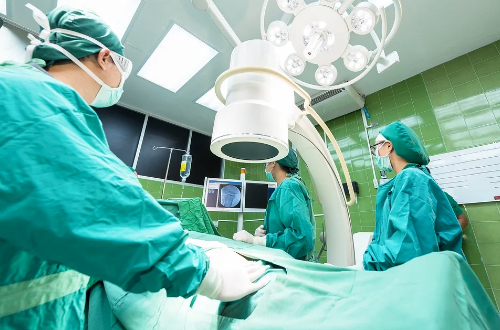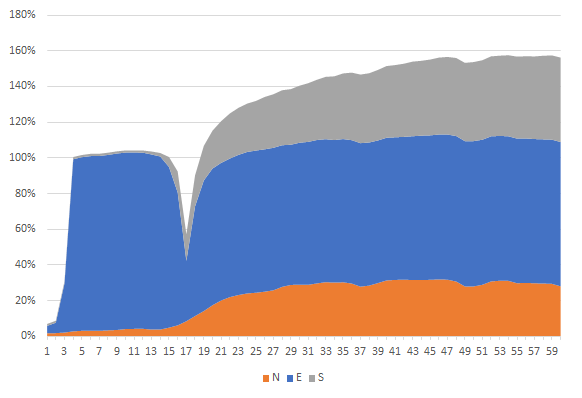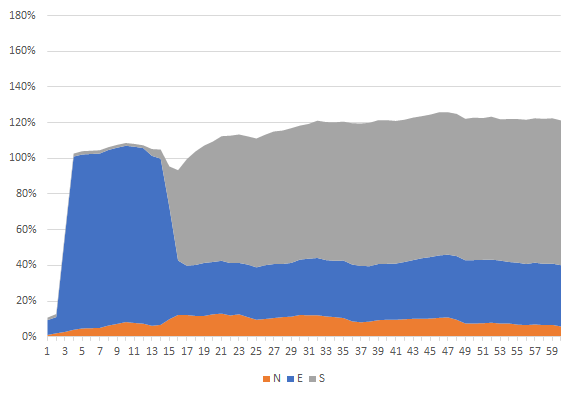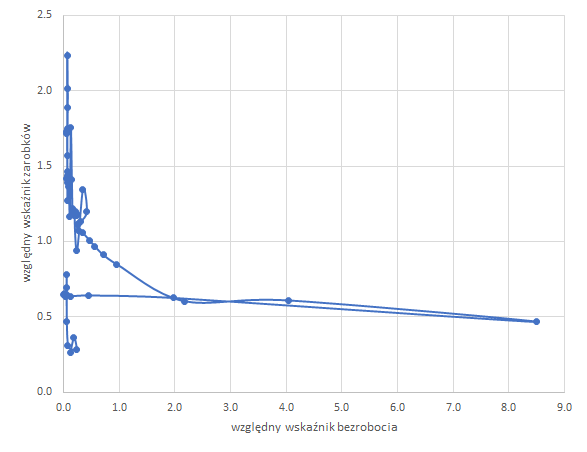
Young doctors work intensively and often combine full-time with part-time work (contract-based) or self-employment. As a result, they also achieve a relatively high level of earnings in comparison with their local average, surpassing even IT specialists.
A feature that distinguishes medical studies in Poland is their exceptionally high popularity among foreigners who come to study in Poland. In 2014, every sixth graduate of medical and dental faculties was a foreigner (this constituted 80% of the foreigners studying for their master's degree in Poland). Almost all (98%) of the foreign graduates do not appear in our data in the group of graduates working in Poland after graduation (it can be assumed that after their studies foreign students typically go abroad or return to their countries of origin). Therefore, our analyses do not include foreigners who did not take up work in Poland after graduation.
Young doctors and dentists combine full-time and part-time employment (e.g. based on the so-called medical services provider contract), as well as self-employment. On average, young doctors and a young dentists work in 1.8 and 1.2 workplaces, respectively (with self-employment counted as a workplace, too). This means that after graduation the vast majority of young doctors choose to work in Poland immediately after completing their studies. The share of employed people in this group of graduates reaches 95%. Full-time employment is accompanied by a growing and significant (ca. 30%) share of young doctors taking up part-time jobs which are complementary to their full-time contracts. Furthermore, there is a very clearly noticeable drop in the number of employed young doctors (slightly less evident among young dentists) after the end of the doctor's internship and during the period of preparation for the National Medical Exam.
Percentage of graduates of long-cycle MA studies in medicine and dentistry, split by type of employment
| Doctors | Dentists |
|---|---|

|

|
After the national exam, i.e. about 18 months after graduation (or slightly earlier for dentists), doctors and dentists typically start their own practice, and begin to work independently. Five years after graduation, the proportion of self-employed doctors and dentists reaches 47% and 81%, respectively (with young dentists by far the most active in this respect). What is more, the graph allows us to predict that in future there will be an even greater number of graduates in this cohort starting up their own businesses.
The consequences of the above-average intensity of professional activity of young doctors and dentists are a low risk of unemployment and high earnings. As a rule, doctors are not threatened with unemployment, except for the annual ‘one-off’ mass registration of young doctors in labour offices, for the period spanning between their internship and first full time employment, usually as resident doctors working under supervision of a senior colleague. A similar phenomenon (yet on a slightly smaller scale) is observed among young dentists. The result of these behaviours is a one-off, sharp decline in employment, as well as an increase in the relative unemployment index in the period when young medical graduates register as unemployed. Apart from this short anomaly, nearly all young doctors and dentists tend to work, as mentioned earlier.
Doctors' earnings also tend to grow very quickly. Although young doctors immediately after graduation earn relatively little money (less than PLN 2,400 per month, i.e. 60% of the local average), they enjoy the fastest salary increase over the period of 5 years – up to over PLN 8,000 per month (167% of the local average). Thanks to such a rapid increase in salaries, they even overtake graduates of technological degree programmes whose salaries are the highest of all graduates by a large margin in the first three years after graduation. In the case of dentists, their salaries do not increase at such a fast pace – however, we must bear in mind that self-employment dominates in this group, and income from own businesses is not included in the records of the Social Security Institution (ZUS).
Graphical representation of the relative unemployment index and the relative earnings index of the 2014 graduates of long-cycle master's degree programmes in medicine and dentistry, over the period of 5 years after graduation
| Doctors | Dentists |
|---|---|

|

|